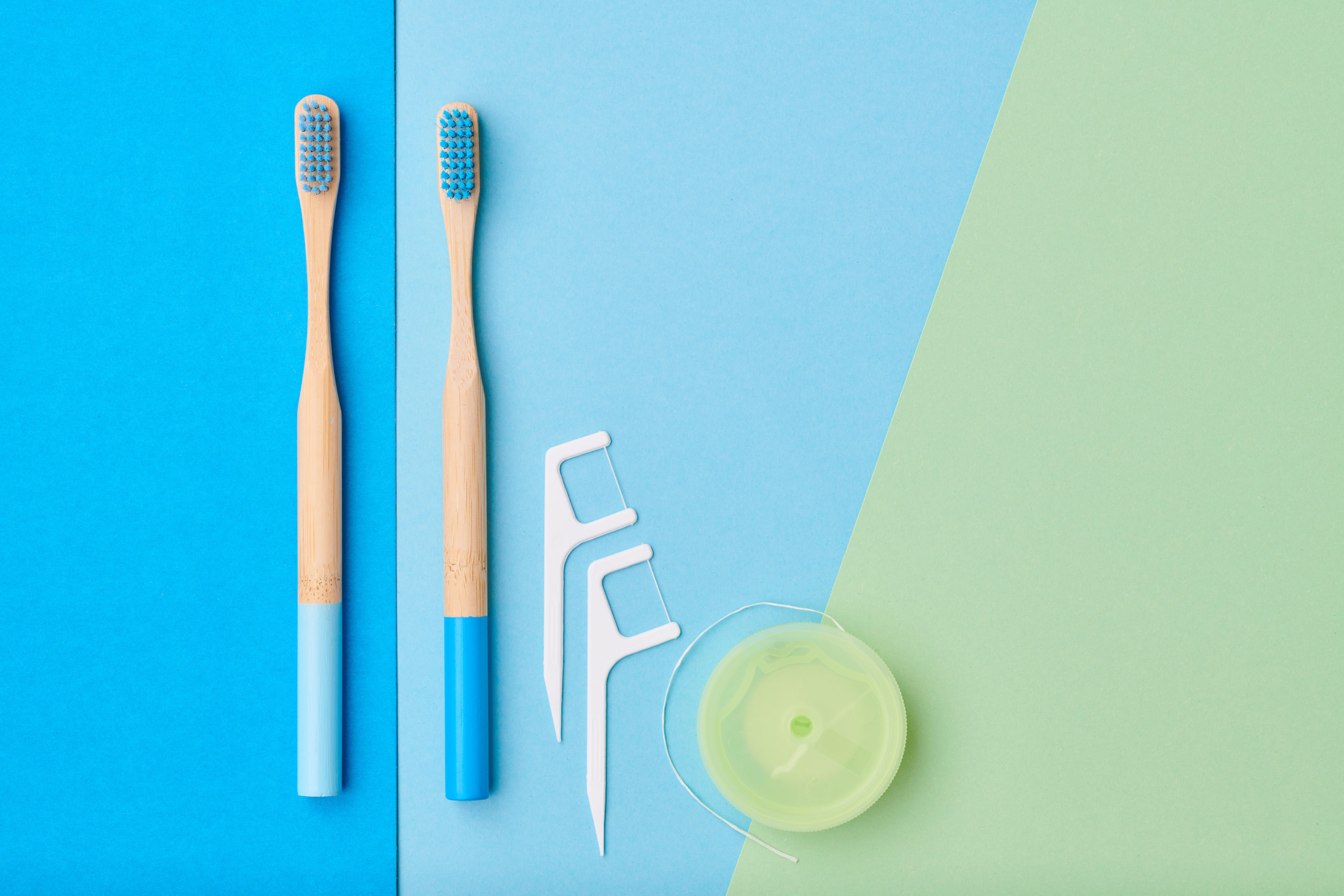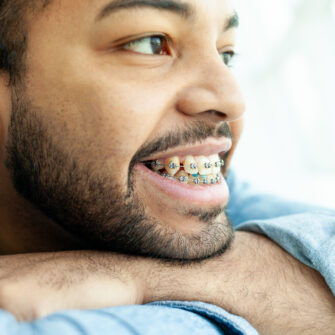The Ideal Oral Hygiene Routine
What is the most effective sequence for your oral hygiene routine? Recent research suggests flossing before brushing your teeth is the way to go. This approach is superior for eliminating dental plaque on tooth surfaces and boosts the fluoride concentration in your mouth. Flossing before brushing helps strengthen your tooth enamel, making it more resistant to decay.
A straightforward two-step dental care routine can wipe out plaque and fortify teeth. And remember, your journey to optimal oral health is a partnership beyond the dental chair.
Oral Hygiene Care at a Glance
Three Steps to a Healthy Smile: Quick Checklist
Tips for Becoming an Active Participant in Your Oral Health
Why Trust an AAO-Certified Orthodontist?
Why Is Flossing Important During Orthodontic Treatment?
You might wonder if flossing makes a difference during your orthodontic treatment. The answer is yes!
A disciplined oral care routine is necessary to avoid other dental problems. Orthodontic appliances don’t damage the teeth but can create nooks and crannies that are challenging to clean. These tricky spots can accumulate plaque and food, leading to permanent white marks (decalcification), cavities, swollen gums, bad breath, and even periodontal disease.
Flossing plays a vital role in maintaining the health of your teeth and gums, and it’s even more critical when you have orthodontic appliances.
- Target Hidden Areas: Braces, aligners, and other orthodontic appliances often create numerous small spaces that are difficult to clean with a toothbrush alone. Flossing can reach these secluded spots, minimizing the risk of plaque buildup.
- Prevent Gum Disease: Accumulated plaque between teeth and along the gumline can lead to gingivitis, the earliest stage of gum disease. Regular flossing helps reduce plaque accumulation and prevent this condition early.
- Preserve Tooth Enamel: Plaque and tartar can erode the enamel of your teeth. Flossing contributes to enamel preservation by eliminating this plaque and its harmful hidden particles and bacteria.
- Reduce Bad Breath: Food particles caught in orthodontic appliances can cause persistent bad breath. Flossing aids in removing these particles, thus helping to keep your breath fresh.
- Protect Overall Oral Health: Poor oral hygiene can lead to cavities, mouth sores, and even more severe conditions like periodontal disease. Consistent flossing complements brushing to provide thorough oral care.
Three Steps to a Healthy Smile
| Task | Action | Timing & Frequency | Essential Tools |
| Preparation & Plaque Removal | Dislodge debris by clearing plaque and food from between teeth and around wires/brackets | Daily; before you brush to maximize fluoride effectiveness | Floss threaders, water flosser, orthodontic flossers |
| Deep Cleaning & Enamel Protection | Thorough scrub to clean all tooth surfaces, wires, and gumlines | After every meal/snack, brushing for a full two minutes each time | Toothbrush (soft or electric), interproximal brushes, fluoride toothpaste |
| Final Rinse & Maintenance | Rinse away loosened particles and apply a final protective layer to teeth | Daily; especially before bed | Fluoride mouth rinse (over-the-counter or prescription strength) |
Tips for Becoming an Active Participant in Your Oral Health
Maintaining a healthy smile while undergoing orthodontic treatment is a collaborative effort. It involves you, your dentist, and your orthodontist. Your responsibilities include:
- Brushing for two minutes after each meal or snack. Can’t brush right away? Rinse your mouth with water as a temporary measure.
- Prioritizing flossing at least once daily, optimally, before brushing.
- Ensuring your teeth are squeaky clean before going to sleep.
- Getting regular dental check-ups every 4-6 months for cleanings and assessments.
- Avoiding sugary foods and beverages that can lead to tooth decay and decalcification.
Oral Care Tips and Tools
Navigating the maze of oral hygiene can be challenging when wearing braces or other orthodontic appliances. While instrumental in aligning your teeth, these devices also create additional areas in your mouth that can trap food and bacteria. The key to maintaining optimal oral health lies in regular cleaning and using the right tools for effective cleaning. Knowing what’s available can significantly enhance your daily oral care routine, making it more accessible, more efficient, and, ultimately, more effective.
Many tools are available to enhance oral hygiene, from brushes designed to reach tight spaces to water irrigators that flush out debris. Here’s a roundup of indispensable tools that can up your oral hygiene game and some pro tips from orthodontists to get the most out of them.
- Interproximal Brushes: These specialized brushes are fantastic for removing plaque and food particles between teeth and around brackets and wires.
- Water Flossers: These devices use water pressure to clean between teeth and around orthodontic devices, making them highly efficient at removing trapped particles.
- Fluoride Mouth Rinse: Whether you opt for over-the-counter or prescription strength, a daily fluoride rinse can help strengthen tooth enamel and ward off decalcification.
- Floss Threaders: These are essential for threading floss through the spaces between teeth and wires, enabling you to clean hard-to-reach areas.
- Orthodontic Flossers: These flossers are explicitly designed to navigate around wires and brackets, thereby making the flossing process more accessible and effective.
- Rubber-Tipped Gum Stimulators: These tools can gently massage the gums, stimulating blood flow.
Your orthodontist may recommend specific techniques, like dipping an interproximal brush into a fluoride rinse for targeted protection or using a fluoride rinse as the liquid in your water irrigator, to make your oral care regimen even more effective. You can even ask your general dentist about using a prescription toothpaste to help fortify your teeth while in treatment!
Why Trust an AAO-Certified Orthodontist?
Consider partnering with an American Association of Orthodontists (AAO) orthodontist to attain a stunning, healthy smile at any age. AAO orthodontists specialize in orthodontics and dentofacial orthopedics, ensuring your teeth and jaws are correctly aligned. They bring a wealth of skill and experience to help you achieve your best smile. Find an AAO-certified orthodontist near you.



